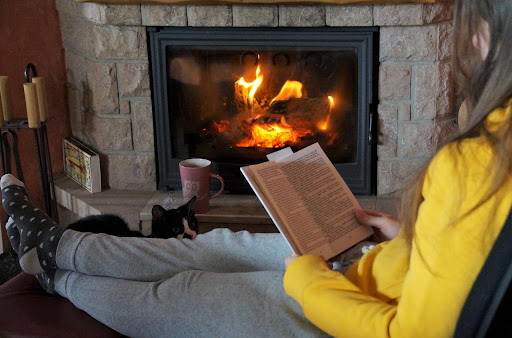Did you know that your heating and cooling system can be harmful to the environment? Many people don’t know, but it’s true! Using natural gas, for example, releases a lot of carbon dioxide into the atmosphere. This blog post will discuss how you can make your home more environmentally friendly with these easy solutions.
Using Pellet Stoves
Pellet stoves are a great option for those looking to go green with their heating system. They use wood pellets instead of gas or oil and don’t release any carbon dioxide into the atmosphere. Pellets can be made from various sustainable materials like rice hulls, cottonseed shells, corn cobs, sawdust, and wheat straw. You can find them at most hardware stores.
Pellet stoves are very efficient and use less wood than you would have to burn in a traditional fireplace or stove. This is because the pellets contain more energy per unit weight, so they produce heat faster without loading up on fuel as often. Pellet stoves also don’t produce any smoke, so they are perfect for those who suffer from allergies or respiratory problems.
Pellet stoves can be installed in an existing fireplace with relative ease too! The installation process is similar to installing a gas-powered stove and does not require any major renovations of the building itself. You may need professional help if you’re using a fireplace that is against a wall.
Geothermal Heating and Cooling systems
Geothermal heating and cooling systems are another great option for those looking to be environmentally friendly with their home. You can use this Unico high velocity HVAC system for both heating and cooling. The system uses mini ducts, meaning fewer air leaks, and is convertible with inverter technology, meaning you can use it for both heating and cooling.
Geothermal systems are completely eco-friendly, using the earth’s temperature to heat or cool your home. They don’t rely on fossil fuels like natural gas either, so you’ll be making an impact by choosing this option!
A geothermal system is installed underground or on the roofs of buildings, so you don’t have to worry about it being unsightly. The only downside is that installation can be expensive upfront, but the long-term benefits will outweigh the costs if done correctly!
Active Solar Heating Systems
Another possible heating option is an active solar heating system. These systems are slightly different from geothermal ones because they use photovoltaic, or PV cells, to convert sunlight into electricity that heats the building. This type of power generation doesn’t produce any carbon dioxide!
Active solar heating systems rely on two panels: one panel for collecting heat from the sun and a second for heating water. You can then use the collected heat to provide both hot water and space heating, which is perfect if you live in an area that gets colder during winter!
Active solar systems are great because they use renewable energy sources like sunlight, so you’re helping out the environment while using them too. They are also more affordable than geothermal systems but not as effective as they only provide heat during certain times of the day.
The installation process for an active solar heating system is quite different from a geothermal one. It can actually be done in stages, meaning you don’t have to install everything at once if it’s too expensive and time-consuming! You’ll still need professional help, though, since several parts must work together properly.
Hybrid Solar Air Conditioners

So far, we’ve been talking about solar heating systems that provide both heat and hot water for your home. But what if you only want an air conditioner? Hybrid solar air conditioning units are a great option!
Hybrid Solar Air Conditioning Systems use the same technology as active solar heating systems, which rely on PV cells to convert sunlight into electricity. But unlike active solar heating systems, they don’t generate heat for space heating and hot water; instead, they use the generated electricity as an energy source for cooling your home through air conditioning!
Hybrid Solar Air Conditioning Systems are less expensive than geothermal ones because they don’t require digging up yards or roofs to install. They are also more reliable than active solar heating systems, which only work when the sun is out.
The downside of these systems is that they can’t really be used as a backup power supply for your home if the electricity goes out either. Hence, it’s important to have an emergency generator or fossil fuel-powered backup system if something happens.
Nature-friendly heating and cooling solutions are becoming more popular for residential homes. Pellet stoves, geothermal systems, active solar heating systems, and hybrid air conditioners offer a great way to keep your home comfortable without relying on electricity or fossil fuels. If you’re looking for a solution that saves energy costs and is better for the environment than traditional methods of delivering heat in winter or coolness in summer – take some time to research these options!
Published on Holr Magazine


